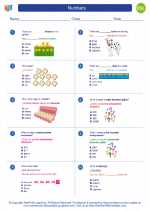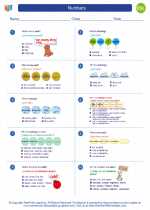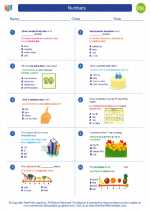Numbers: Explanation and Study Guide
Numbers are an essential part of our everyday lives. They are used for counting, measuring, and identifying quantities. In this study guide, we will explore the different types of numbers and how they are used in various contexts.
Types of Numbers
- Whole Numbers: These are the numbers 0, 1, 2, 3, 4, 5, and so on. They do not include fractions or decimals.
- Integers: Integers are whole numbers, along with their negative counterparts (e.g., -3, -2, -1, 0, 1, 2, 3).
- Fractions: Fractions represent parts of a whole and are written in the form a/b, where a is the numerator and b is the denominator.
- Decimals: Decimals are numbers that include a decimal point, such as 3.14 or 0.5.
- Ordinal Numbers: These numbers indicate the position or order of something (e.g., 1st, 2nd, 3rd).
How to Use Numbers
Numbers are used in various ways, including:
- Counting: We use numbers to count objects, people, or things.
- Mathematical Operations: Numbers are used in addition, subtraction, multiplication, and division.
- Measurement: Numbers are used to measure length, weight, volume, and other quantities.
- Time and Dates: Numbers are used to tell time (e.g., 7:00) and indicate dates (e.g., March 15th).
Study Tips for Learning Numbers
Here are some tips to help you learn and understand numbers:
- Practice Counting: Count everyday objects and practice writing the corresponding numbers.
- Use Manipulatives: Use objects like blocks or beads to understand the concept of numbers and counting.
- Play Number Games: Engage in games that involve numbers, such as bingo or number recognition activities.
- Learn Math Operations: Practice addition, subtraction, multiplication, and division to become familiar with using numbers in calculations.
- Explore Real-World Applications: Look for numbers in everyday life, such as on clocks, calendars, and measuring tools.
By understanding the different types of numbers and how they are used, you can develop a strong foundation in mathematics and everyday life.



